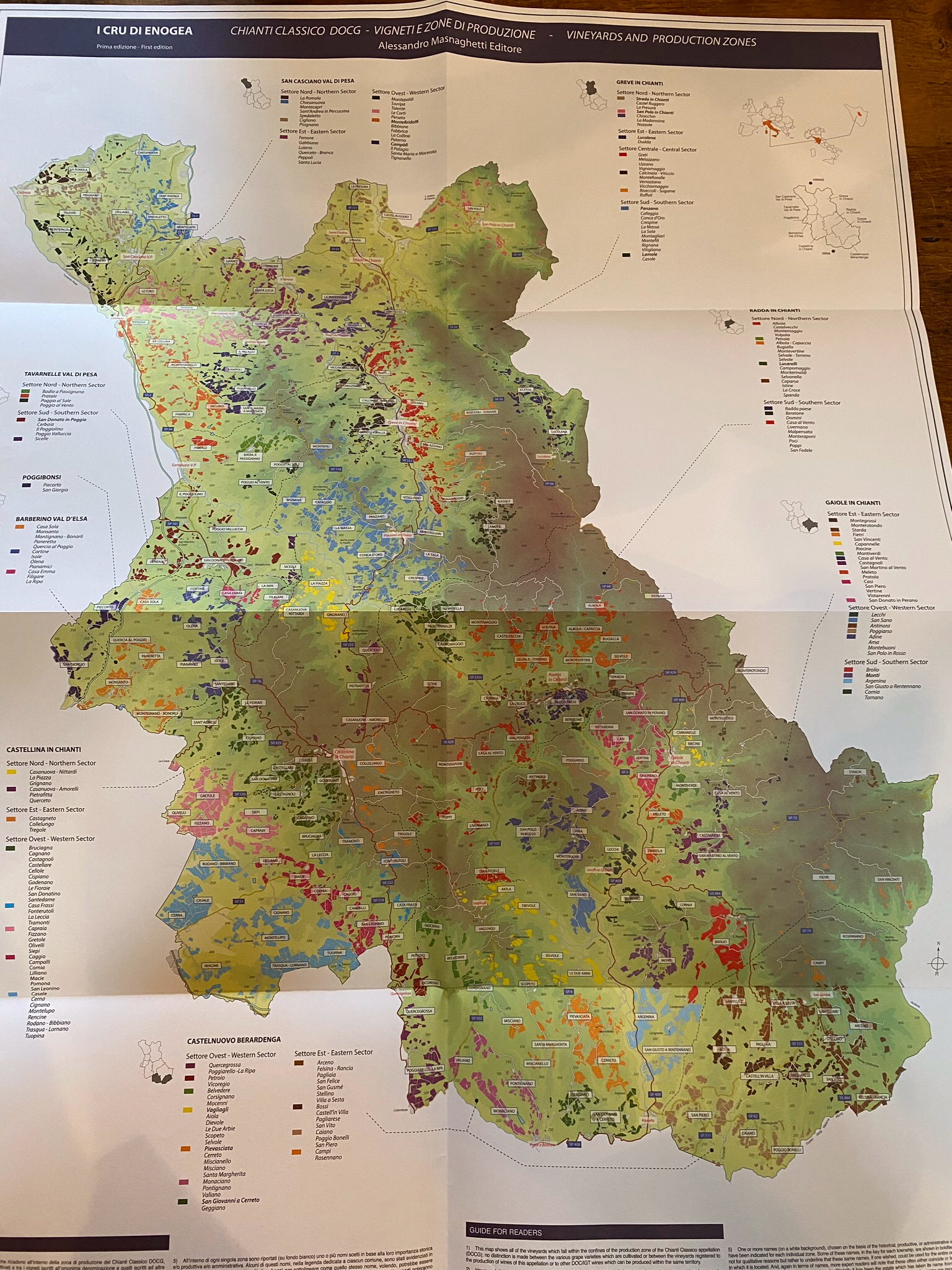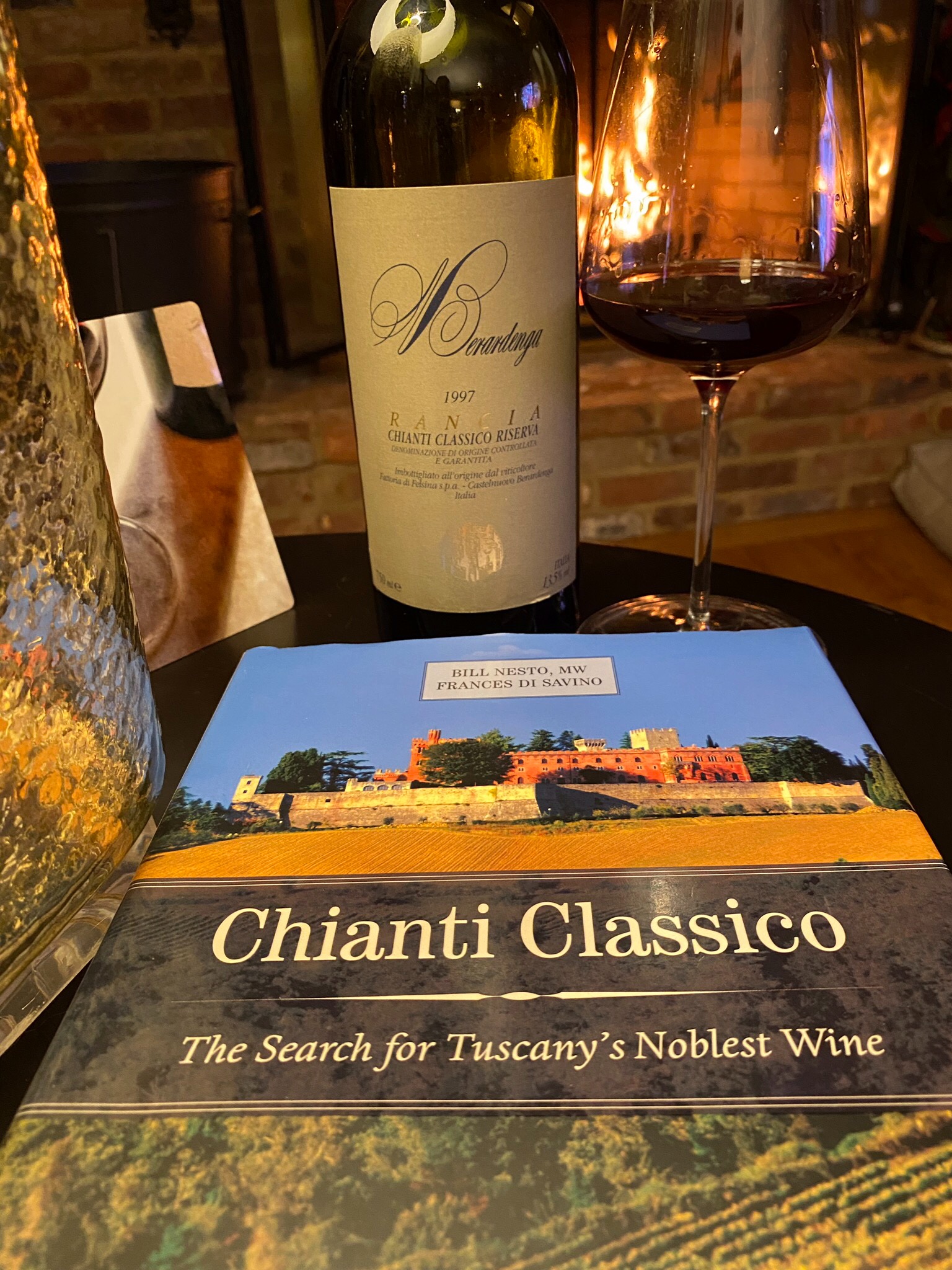Doing some research…


They’re way the heck up in the mountains - in what looks like the middle of nowhere, maybe slightly more than halfway from Radda to Greve - but if I were doing a serious Chianti tasting, then I would definitely want to include Anna Maria Socci’s “Le Masse di Lamole”.
Via Lamole, 65 Greve in Chianti, Firenze - Toscana
https://www.lemassedilamole.it/
Back in the day, when we could still get our hands on the stuff, I was very impressed with the cleanliness & precision & clarity of her wines [and I also have a pretty strong memory of some dark (yet clear) blue synesthesia].
Unfortunately, I can’t tell from free Wine-Searcher whether her wines are still imported to the USA.
There are some delicious wines grown in Lamole.
It appears the UGA’s are now official for Jeff’s comparisons.
That’s why it was very gratifying to see that the Chianti Classico Consorzio and the Italian government have given official recognition to subregions within the Chianti Classico zone. I can appreciate the reluctance to do so; for many consumers, the confusion between or conflation of Chianti Classico and Chianti wine is real, and the latter has its own subzones to add to the mix. But one would struggle to find a fine wine region with Chianti Classico’s size and history that hadn’t articulated the various regional differences within its borders in some manner. Keen observers and the region’s own winegrowers have long been aware of these differences, but having them officially recognized makes it easier for newcomers in particular to explore the DOCG’s wines with confidence.
The Consorzio hasn’t rushed in, however. For now, only Gran Selezione wines will be able to bear a Unità Geografiche Aggiuntive (UGA), as the new designations are called, on the label. Eventually it’s expected that Riservas and Annata Chianti Classicos will be able to use the designations as well. There are 11 UGAs. In some areas there are subdivisions that are somewhat provisional; producers in those areas will have three years to decide which they would prefer to use.
Some additional information from Decanter:
“Now formally designated as Unità Geografiche Aggiuntive (UGA), or ‘Additional Geographical Units’, the following will soon be officially permitted on labels: Castellina, Castelnuovo Berardenga, Gaiole, Greve, Lamole, Montefioralle, Panzano, Radda, San Casciano, San Donato in Poggio and Vagliagli.”
This has long been an effort pursued by Vittorio Fiore (Poggio Scalette). Specifically to recognize Lamole which is, for me, the most identifiable terroir of Chianti Classico (as well as varietal clone).
Gregory, any chance you’d be willing to share the map or a tasting plan? I’m looking at doing a Chianti Classico tasting in the next couple of months and would be interested in seeing what you think would make a good tasting. I just threw some darts and came up with (either CC or CCR):
Felsina
Monsanto
Casa Emma
Carpineto
Rocca di Montgrossi
Volpaia
Antinori
Castellare di Castellina
Glad to see Istine listed alongside Montevertine, as no one really brings them up on this board and they make really elegant, beautiful wines, and I only discovered them about 2 years ago. I agree 100% with the other posts that Volpaia doesn’t belong in this category, as their wines are crowd-pleasing and delicious wines that are great for helping people “bridge the gap” between New World wines (or Super Tuscans) and the lighter, more elegant Sangio-based wines of Tuscany, but are quite dark, rich and atypical as compared to Montevertine and Istine. As between Istine and Montevertine, my general impression is that Istine flavor profile emphasizes complex fruit elements while Montevertine goes more savory characteristics (soy, herbs and leather). I adore both…
Thought I’d resurrect this thread. Wine Spectator (yes WS) did an excellent job covering Chianti Classico in their 10/31/22 publication. They went through the differing soils, elevations, and history across the 11 different regions. Worth the read.
I’m still waiting on this:
Tons of great info in this thread! I have also loved a few Sangioveses from Emilia Romagna. I’ll also add that there are around 120 clones identified so far. I grow four and the differences between Prugnolo Gentile and Biondi Santi are remarkable, virtually completely different grapes, even if that clonal signature gives way to “terroir” with vine age. I heard an estimate of 85 different ones in the general Chianti area once, plus as ripeness has dialed back for some the pruning has changed back to can pruning and super-tight vine spacing that was all the rage in the 00’s is changing a bit too. Plus you have blenders at times, whether cofermented as field blend rather than just a Colorino addition. I too have found Chianti zone generalizations challenging in some ways with so many fine-grained factors.
Double vote here for Istine on value in the neo-classical realm!
It’s quite an impressive book I can tell you, and while worth the wait, quite shocking you still have to wait.
You probably poked them about it but hopefully you get it sometime soon!
Wait, when did you get yours?!0
Sorry, should have mentioned that I am in Europe and got mine probably sometime in September/beginning October.
I ordered directly from AM (even if at a higher cost due to transport and VAT - preferred for the margins to stay with him), nonetheless the book was also available in the Netherlands about the same time.
I also have not received my copy.
I corresponded with Rare Wine Co this week about the arrival date for my order – they said the books arrive in Feb.
Got mine. I posted on the OG thread but not particularly thrilled with the Italian/English side-by-side format. Gorgeous book though. Guess I’ll have to learn Italian!
Got mine, too. As someone working to learn Italian, I like that it is side by side.
I need to track down some more of these! 100% Sangiovese raised in steel and cement.
-
2018 Tenuta di Carleone Chianti Classico - Italy, Tuscany, Chianti, Chianti Classico DOCG (5/27/2023)
Delicious Chianti Classico. Very good for the level. Nice depth and complexity with the elegance you might expect from Radda. I need to look for more from this producer, as I have enjoyed the few bottles I have tried.
Sean earned his chops at Montevertine, and I too was blown away by this wine. Tasted it spring of ‘22 and immediately put it into the class of Le Pergole Torte. Beautiful Radda Chianti!
I reached out to Sean to see if he had distribution in California, but I missed the opportunity by “this much.” I’m not 100% positive, but I think Kermit Lynch recently picked them up.